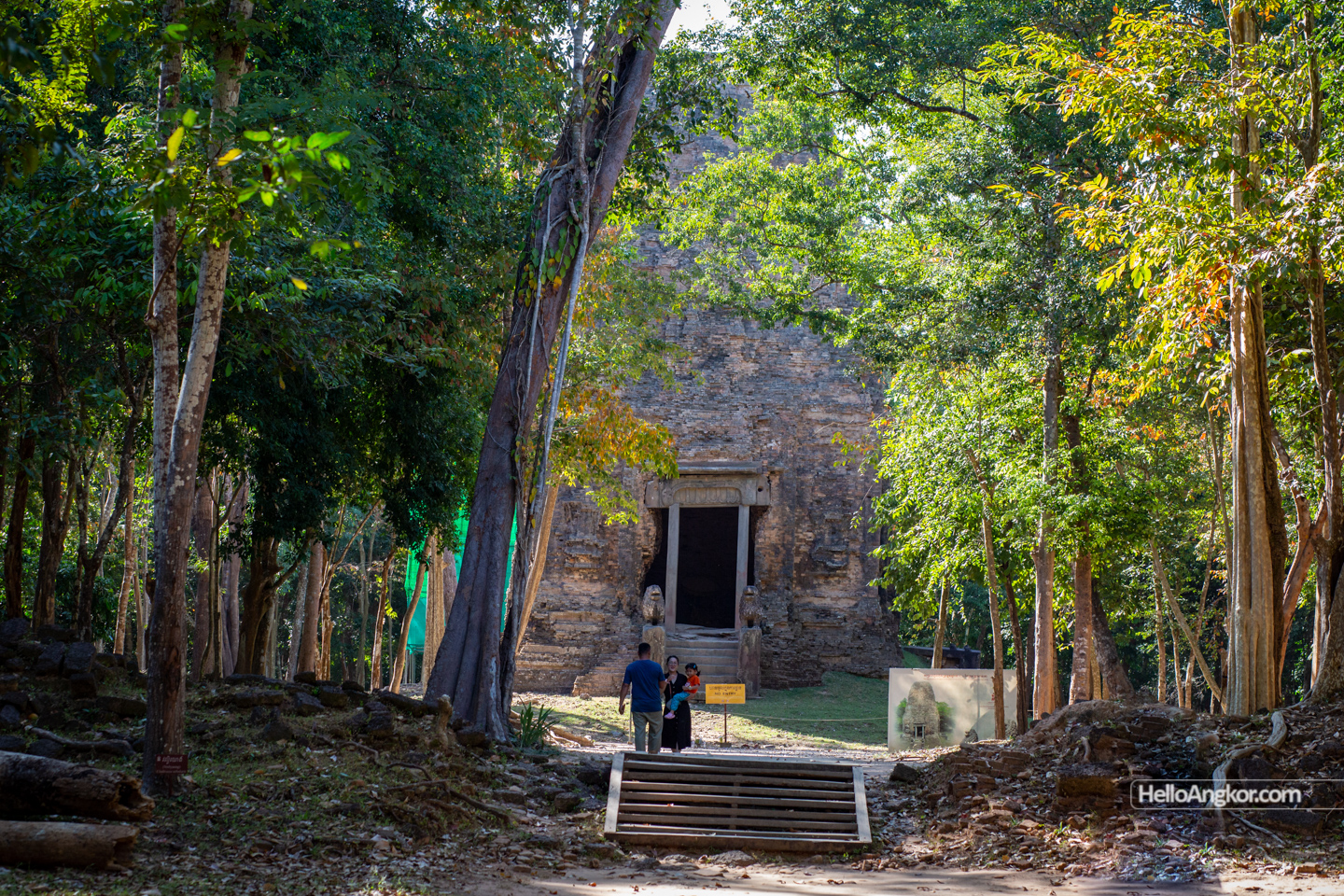Prasat Tao is the central sanctuary of Sambor Prei Kuk, and the main temple of the C group. The central shrine is a stunning monumental brick tower, believed to date back to the 7-8th century, and is renowned for its beautiful lions that adorn its entrance steps. The lions here are believed to be the first use of such as statuary, guarding the temple entrances, which would be a theme continued for centuries to follow, see Lions of the Ancient Khmer Empire.
Prasat Tao, or Central Group, is surrounded by two laterite enclosure walls. The outer enclosure wall is 280 by 270 meters and the inner wall, 145 by 135 meters with entrances on the east and west, containing the ruins of several shrines or terraces and a laterite stepped basin in its north east corner.
The inner enclosure also contains the ruins of several structures whilst on the center axis the spectacular central tower (also known as Tower C1), which is about 20 meters high in a rectangular form that opens to the east with false doors around the other sides. The also doors are formed from sandstone, flanked by ornately decorated round door columns and topped by decorative lintels.
The exterior walls of the tower are adorned with flying palace reliefs and the upper registers of the roof are adorned with reliefs.
Ongoing restoration works in June 2023 – note the very special sandstone tiles preceding the entrance, in the lower right picture, the lovely workers there were recycling broken brick back into base material which can be used to make new bricks.
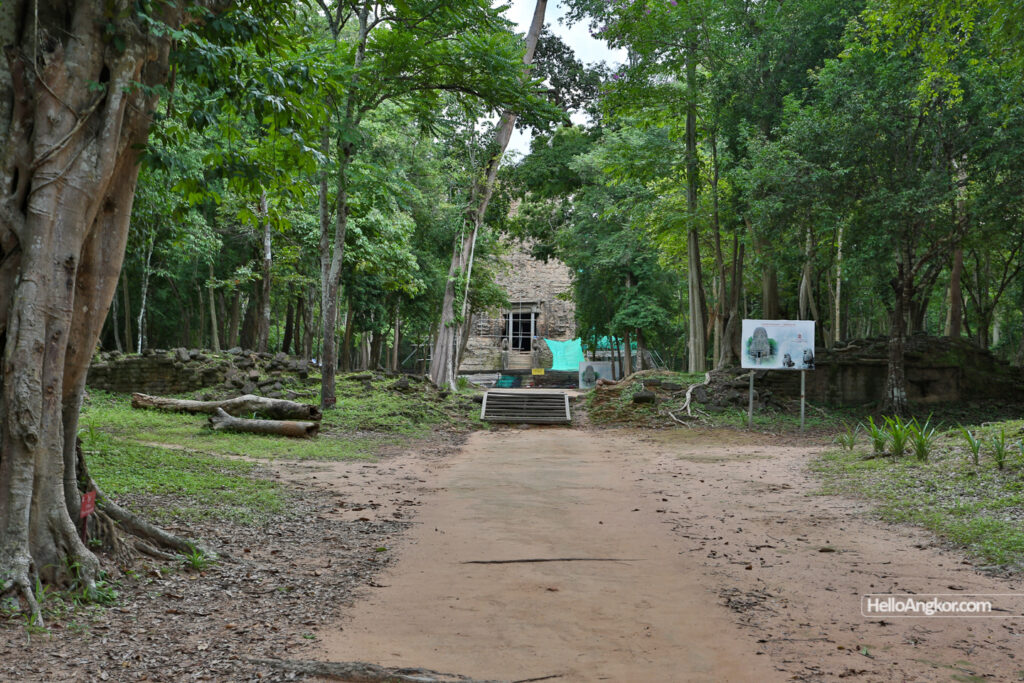

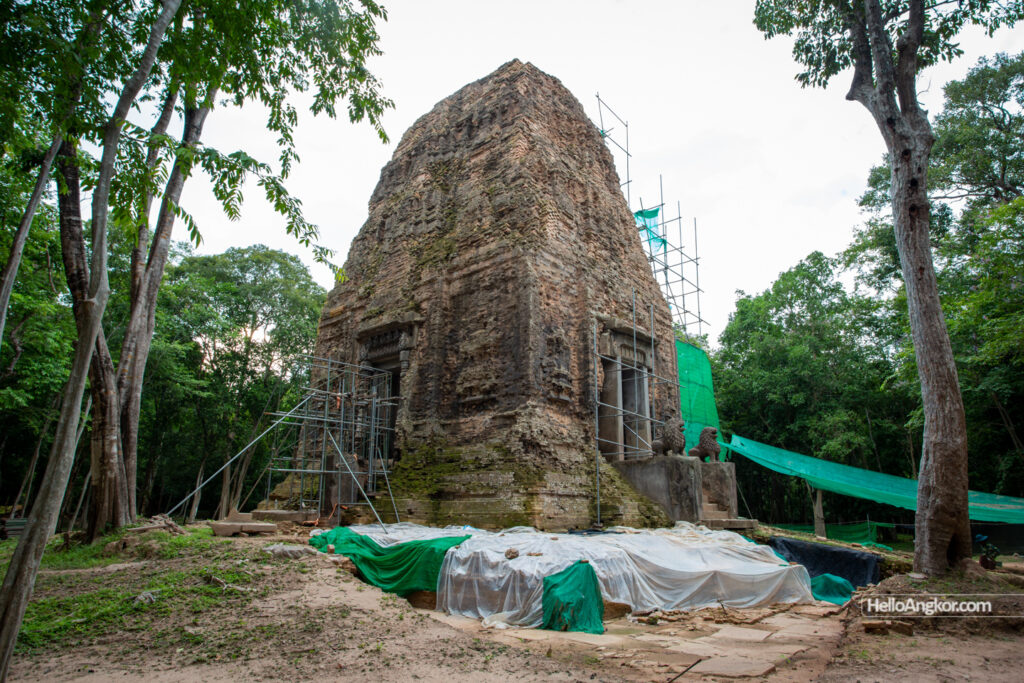


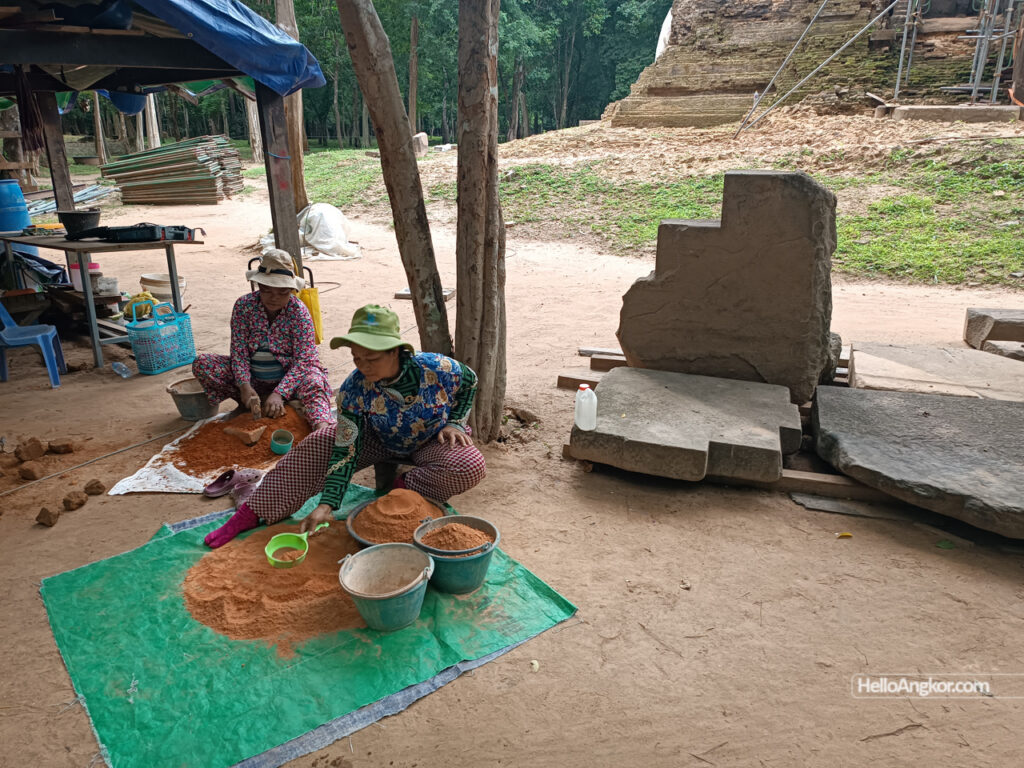
Restorations works in Jan 2022
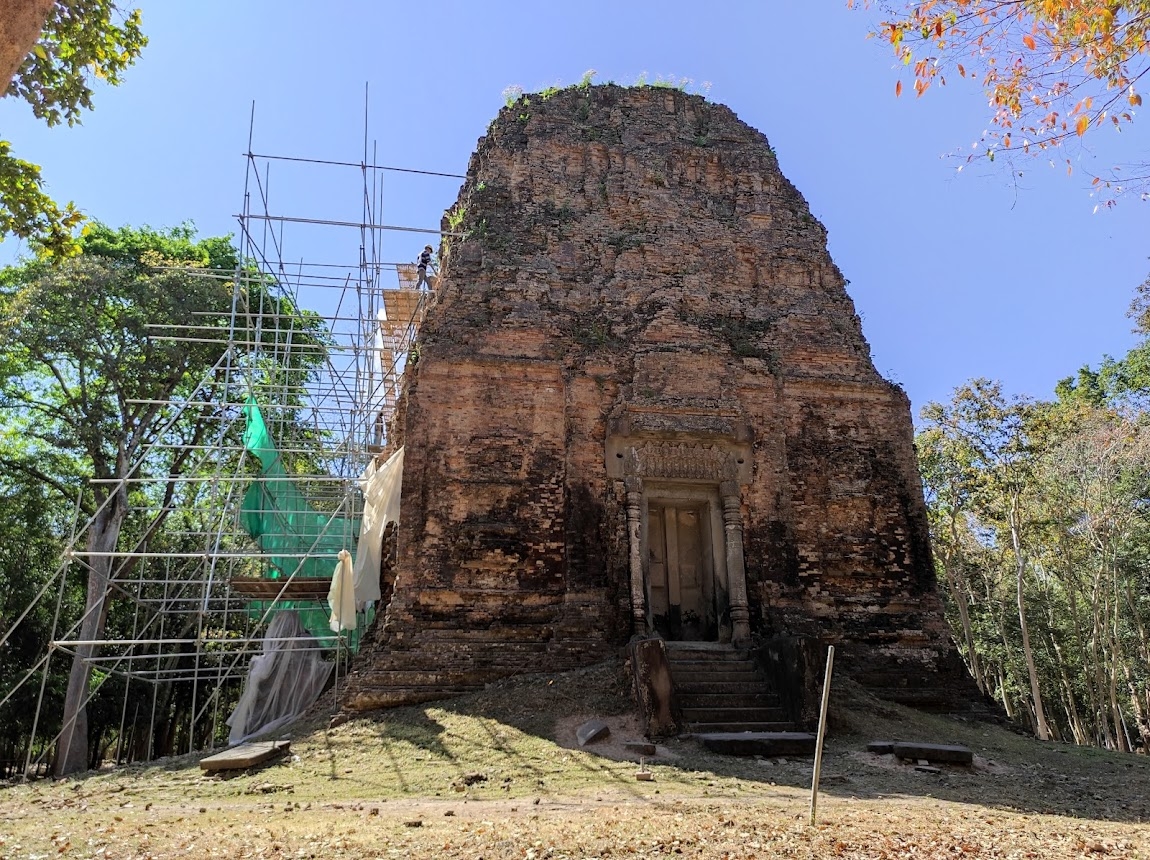

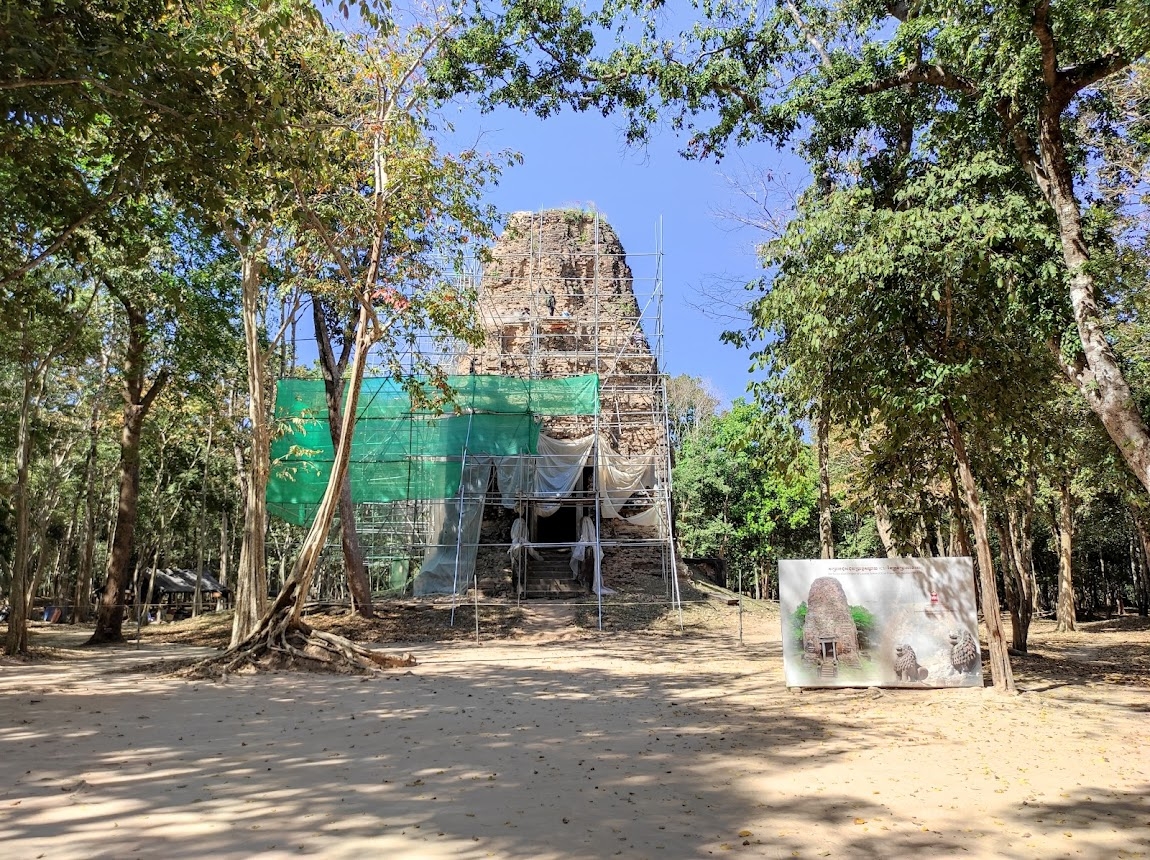
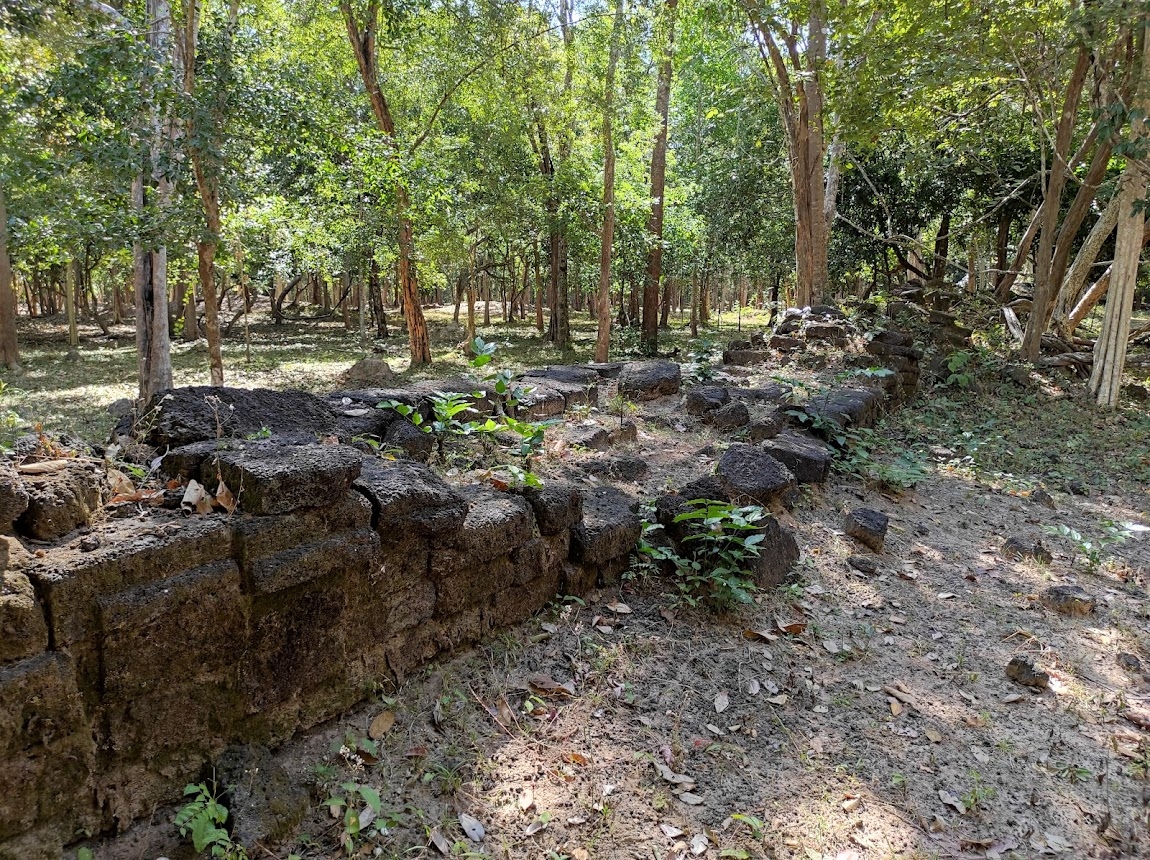
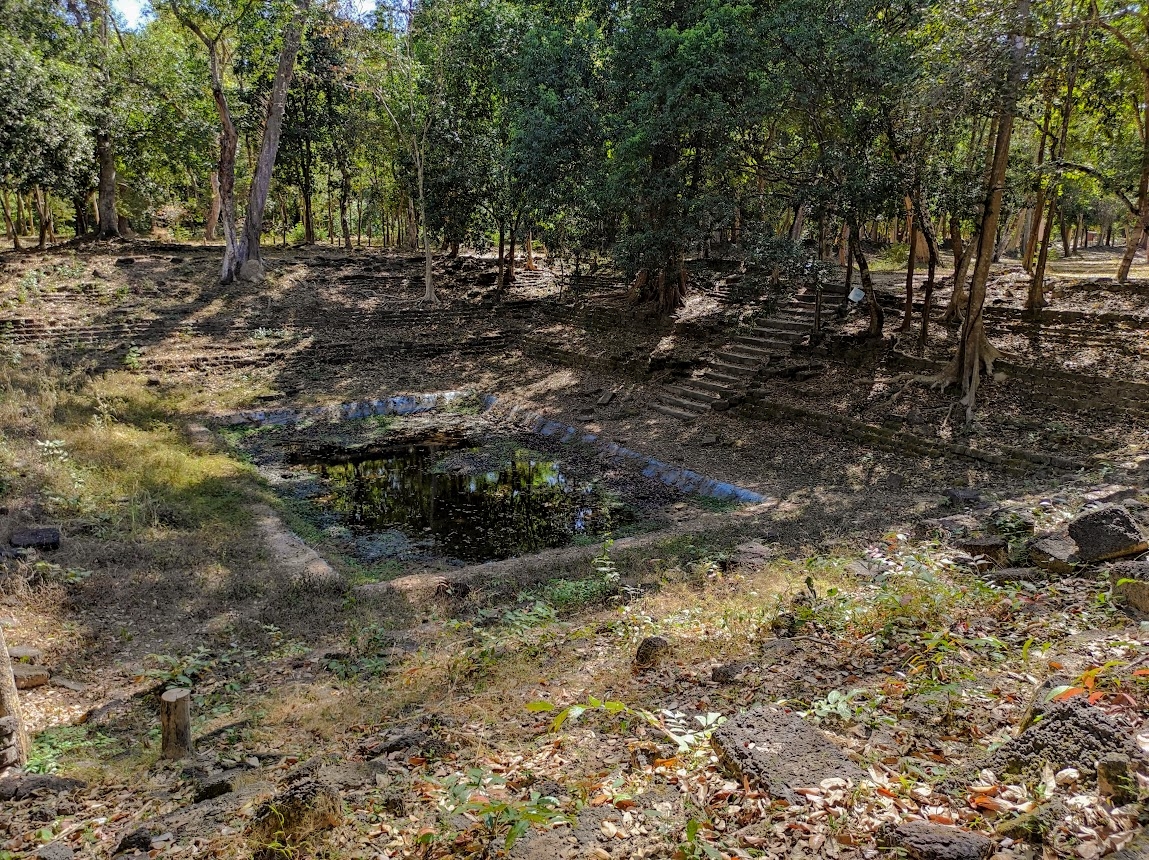
Historical Notes

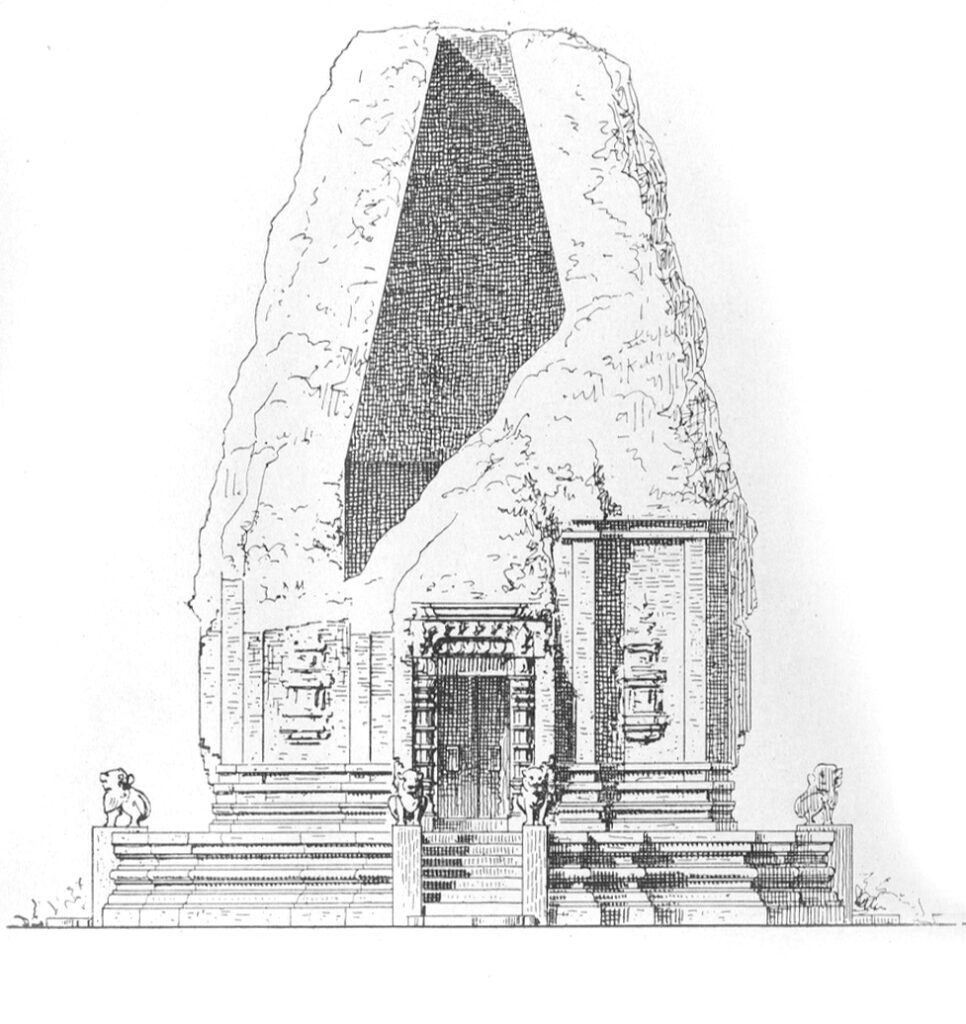
Building C is a large rectangular building, open to the east and raised by a terrace. It reached 14 meters in its largest dimension and its walls are almost 2 m. 50 thick. The interior hall thus covers (along with S1) one of the most considerable surfaces of this type in Cambodia: 8.35m x 5.56m = 46.43m. Was it a temple? We have found neither in the room nor in the surroundings any trace of the pedestal which, if it existed, must have been enormous; the building has not been excavated by the natives and it does not have a somasutra. It is however difficult to see in this very rich monument anything other than a sanctuary, because of the lack of light and ventilation which makes it hardly suitable for any other destination.
The inner hall is decorated with pilasters which stop at a retreat from the wall; it is intended to support a ceiling and compensates for the unusual absence of hooks. The vault, which starts a little above, is built by irregular corbels. Nothing remains of the entrance hall, which has recently been brutally transformed into an enormous bay.
The base offers an ample profile analogous to those of Java; it is interrupted to the right of the E. door and the false doors by stone steps, the enormous escutcheons of which have received lions in a naïve design (see fig. 83); a large slab cut into a brace serves as a starting point for the step.
The walls have the usual composition, but the relatively small building reductions only had a single storey ending in a large circular pediment.
The false doors seem to have been of the simple type, only the bottom is preserved. They give a rare example and moreover one of the most pleasing with the use of the octagonal form for the small columns, but their decoration and their profiles remain very different from the similar motif in classical art (see fig. 20). The space between the stone uprights of the false bay is very hollow and the back wall is also of sandstone. It is provided with a beat; reserves await the chiseling of a fictitious ring. The lintels of the N. and S. false doors are of type II, but do not have capitals, the small columns having received them; the five medallions are entirely transformed into florets. That of the W face is of intermediate type II. The main lintel, that of the E face, suffered a lot. It was type II and the arch is very prominent. It seems to have been decorated with motifs above the columns, but does not seem to have presented the usual medallions on the arch.
The floors seem to rise very steeply; they are completely lost in the vegetation which covers the tower. Their mass in length, like the shape of the vault itself, excludes any idea of crowning in an ordinary pyramid.
The whole building, except probably the stone parts, was coated with plaster.
Groupe Central (C) Édifice C1 – L’Art Khmer Primitif, Henri Parmentier, 1927
Map
Site Info
- Site Name: Tao (Pr.) Khmer Name: បា្រសាទតោ
- Reference ID: HA12785 | Posted: January 18, 2021 | Last Update: August 10th, 2023
- Tags/Group: pr, ra, Sambor Prei Kuk, T4, Temples
- Location: Kampong Thom Province > Prasat Sambour District > Sambour Commune > Sambour Village
- MoCFA ID: 1645
- IK Number: 162.01

